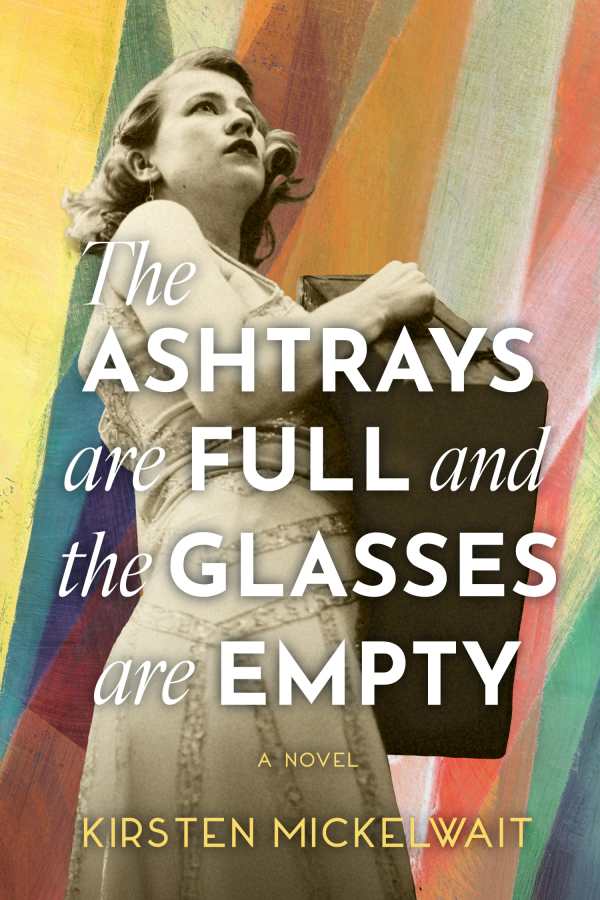The Ashtrays Are Full and the Glasses Are Empty
With sensual finesse, the historical novel The Ashtrays Are Full and the Glasses Are Empty captures the decadence of a changing nation via a couple’s unique marriage.
Kirsten Mickelwait’s shimmering historical novel The Ashtrays Are Full and the Glasses Are Empty is about the marriage of Sara and Gerald Murphy, American expatriates and artistic patrons.
A daughter of the American “aristocracy,” Sara was raised to attract a wealthy husband, bear children, and maintain decorum and grace. But Sara yearns for a more intimate and vibrant marriage, along with a free-spirited life filled with style and verve. In 1915, despite her parents’ initial disapproval, Sara marries intelligent and charming Gerald, who shares her dream of pursuing interesting experiences and creating beautiful home environments.
Narrated from Sara’s keen, encompassing perspective, the novel builds upon biographical sources to enliven the Murphys’ enduring partnership. During their 1920s heyday, Sara and Gerald become part of Paris’s eclectic artistic community, befriending painters Fernand Léger and Pablo Picasso along with F. Scott and Zelda Fitzgerald, Dorothy Parker, and Ernest Hemingway. Far from being idle dilettantes, the Murphys pursue their own creative ventures, including a hands-on passion for decorating and landscaping their “unpretentious chalet” in southern France. Gerald produces modernist paintings while Sara hosts memorable parties; with the birth of a daughter and two sons, it seems that they have achieved their mutual goal of a charmed yet unconventional existence.
Beyond the Murphys’ colorful lifestyle, the book reveals Sara’s unhappiness over their increasing lack of physical intimacy. Gerald’s mood swings strain the couple’s outwardly “perfect” marriage, while his undeclared bisexuality lead both partners to pursue fleeting affairs. Grounded by nuanced characterizations, Sara and Gerald’s relationship is depicted as being flawed yet caring and resilient; upon experiencing devastating personal losses and financial worries, they become closer in spirit while helping each other through periods of grief and readjustment.
The book also incorporates a backdrop of the various events of the twentieth century, including the Gilded Age, the liberating 1920s, the Great Depression, World Wars I and II, and the assassination of John F. Kennedy. Sensual, finessed descriptions detail “endless rounds of Dom Pérignon” and sunbathing on Riviera beaches; Sara plants American “Golden Bantam corn” seeds in their French garden, while Gerald mixes heady cocktails with “meticulous precision.” The novel’s first half revolves around a celebrated roster of artists, writers, and other distinctive personalities, offering glimpses of Chanel fashions, Cubism, Diaghilev ballets, and composer Cole Porter’s “antics.” Later, the passage of time brings mellowed resonance, along with shifting priorities, introspection, and the inevitable realities of aging and illness.
Still, Sara and Gerald’s social consciousness is limited by the confines of their privilege and status. In the course of her travels, Sara observes and expresses concern for less fortunate people, yet she continues to pursue a rather self-focused “lavish life.” Though she condemns racism, she and Gerald sometimes entertain party guests by singing “Negro spirituals” without considering the underlying aspects of cultural appropriation and stereotyping. However, this racial myopia is reflective of the era.
An immersive, captivating novel about a unique marriage, The Ashtrays Are Full and the Glasses Are Empty evokes the exuberant splendor of the 1920s and the decade’s sobering yet strengthening aftermath.
Reviewed by
Meg Nola
Disclosure: This article is not an endorsement, but a review. The publisher of this book provided free copies of the book and paid a small fee to have their book reviewed by a professional reviewer. Foreword Reviews and Clarion Reviews make no guarantee that the publisher will receive a positive review. Foreword Magazine, Inc. is disclosing this in accordance with the Federal Trade Commission’s 16 CFR, Part 255.

